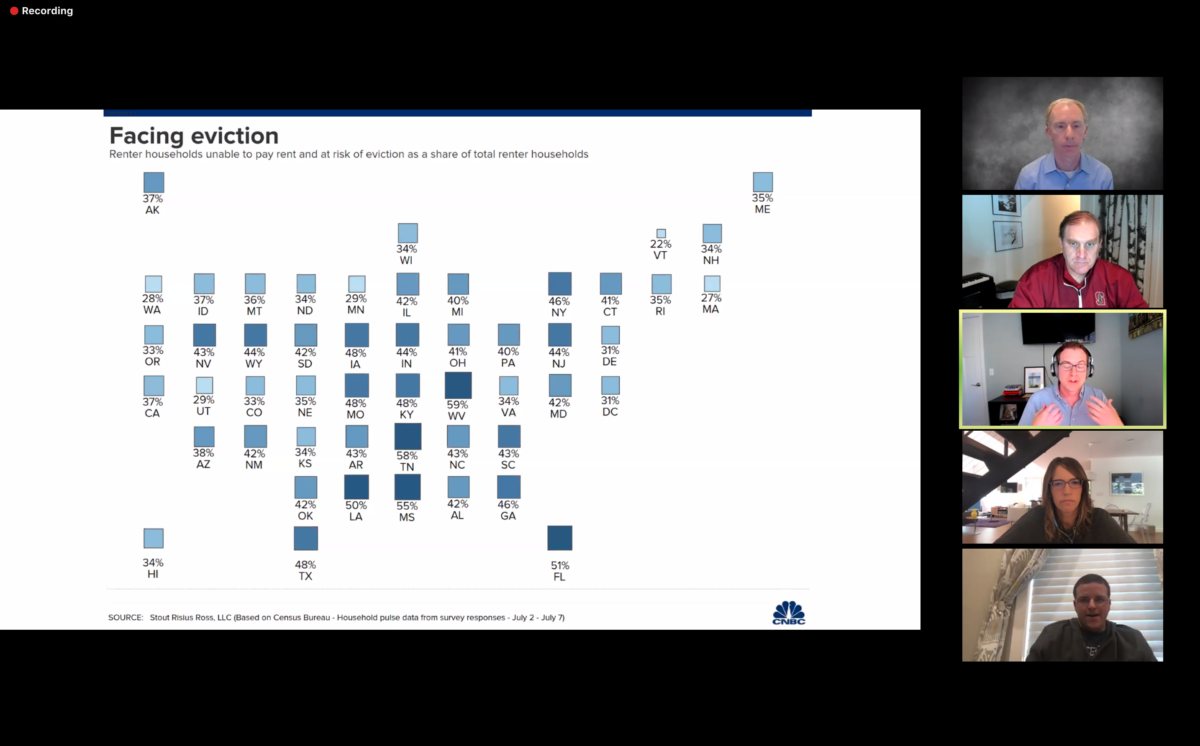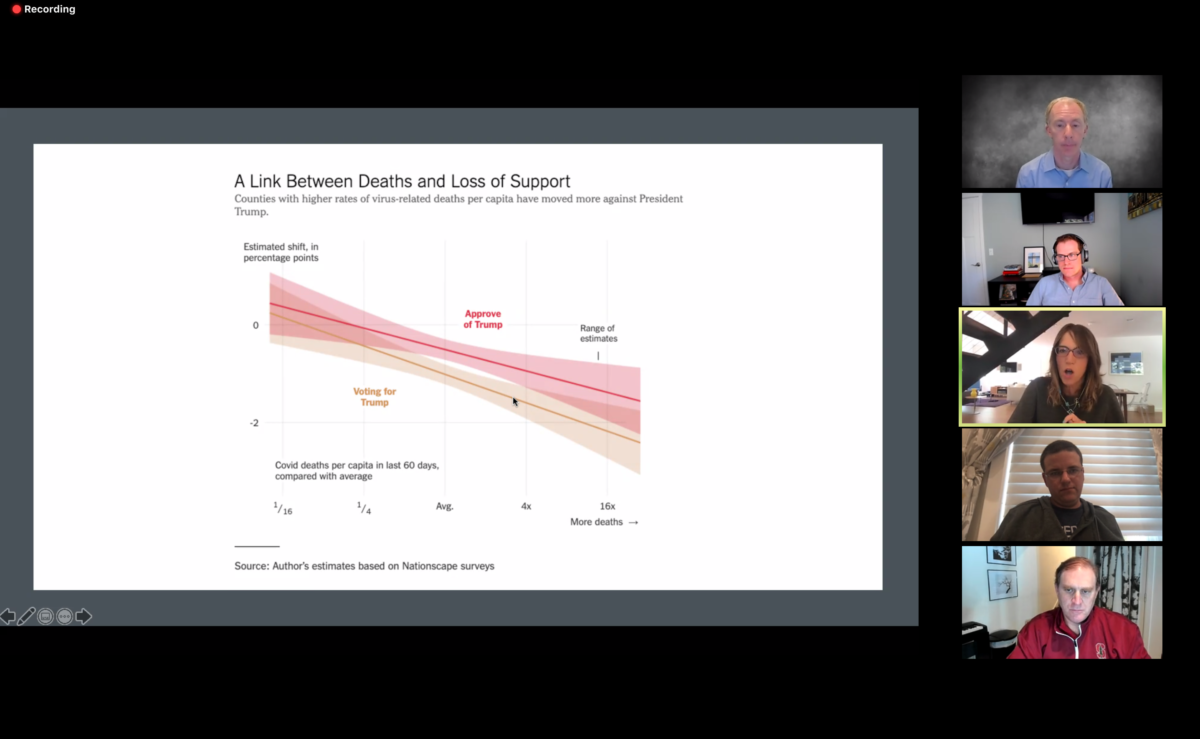Stanford faculty gathered on July 28 for a webinar discussing options for holding a fair election during a pandemic, and presented research that gave insight on vote-by-mail and COVID-19’s impact on political preferences. The event was hosted by Stanford Institute for Research in the Social Sciences (IRiSS) and moderated by political science professor Michael Tomz.
Stanford Law professor Nathaniel Persily, co-founder of HealthyElections.org, explained the challenges and solutions to transitioning to vote-by-mail systems throughout the country.
“Places like North Carolina, Wisconsin and Georgia, where 6% or fewer voters in 2018 voted by mail are in a different position than, for example, Arizona, where roughly 80% have voted by mail,” Persily said. “For these states like Wisconsin and Pennsylvania to make the substantial shift that needs to be done, it will be a major logistical undertaking.”
Persily claimed that while “there is a growing partisanship perception of vote-by-mail fraud,” there are few examples or evidence of it. He also explained that many civil rights groups are raising concerns about the disproportionate availability of absentee ballots, and to this, Persily suggests having failsafe polling stations.
Political science professor Adam Bonica reinforced Persily’s claim, pointing to his research on all-mail voting in Colorado and its effects on turnout and turnout inequality. According to Bonica, Colorado implemented “sweeping election reform” in 2014 by turning to all-mail voting with optional in-person polling stations and same-day voter registration.
His research, comparing Colorado’s all-mail voting turnout against a group of control states, showed that vote-by-mail systems increased voter turnout in both political parties, and furthermore, disproportionally encouraged voting by previously low-voting demographics: racial minorities, young voters and low-income households.
Some of the issues for the 2020 election, as Bonica suggests, are unsuccessful implementation due to a rushed timetable, the undermining of USPS by the Republican political party and address confusion due to housing displacement for renters.

“We have recent data on evidence that there may be a massive displacement of renters and homeowners,” Bonica said. “If people are moving addresses, it is going to create a whole slew of problems for election administration that relies on [a] registration system that is usually quite outdated.”
Andrew Hall, also a political science professor, discussed his findings of the public’s perception of election legitimacy, specifically due to vote-by-mail systems. Hall claims that failed implementation of vote-by-mail could cause a variety of issues (low voter turnout, ballot tampering, lack of volunteers), which may further lead to a rejection of the outcome of the election by particular political stakeholders. Hall cited several tweets by President Trump and various claims that vote-by-mail disproportionally hurts Republican candidates.
Hall and his research group attempted to test the question: Do vote-by-mail systems help one party or another? They studied various counties within states that transitioned to a vote-by-mail system. Their conclusion was that vote-by-mail was a “remarkably neutral policy” because it didn’t boost either party’s turnout more than the other.
The final speaker, Lynn Vavreck, is a professor of Public Policy at UCLA and heads the Nationscape project, a survey project that conducts 6,250 interviews a week in an attempt to capture common American attitudes and dialogue. The project began in July 2019 and has uniquely offered a glimpse into political attitudes regarding the handling of the virus.
One of the questions conducted during the interviews asked: “How much, compared to most people in the public, do these candidates rely on their hunches?”
Vavreck found that during April, Democrats, Independents and Republicans believed President Trump relied on hunches more than the average person in the public. Vavreck was also able to draw a relationship between the COVID-related deaths in a county and the approval of Trump and local Republican governors, indicating that as county deaths increased, the local willingness to support Trump decreased.
“Just like presidents who fight a war (Trump has called himself a wartime president) suffer when casualties of war happen in local areas, the same thing is happening for Trump and the Republicans with COVID,” Vavreck said.

Both Hall and Bonica emphasized that their research suggested vote-by-mail systems didn’t favor either party. Persily and Vavreck highlighted that political polarization commonly exists in the federal government and becomes less prominent within local and state governments, creating optimism and confidence that local officials will be able to successfully administer the election.
“We need to amplify the voices of local election officials,” Persily said. “There’s going to be a lot of confusion about how to vote, where to vote, the safety of polling places, etc., and the more we amplify those voices, the more they might drown out the more nefarious actors.”
Contact Devin Gupta at devin.gupta.dg ‘at’ gmail.com.
